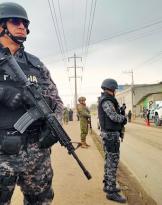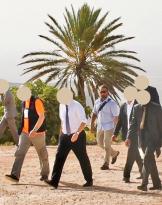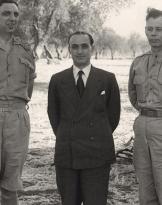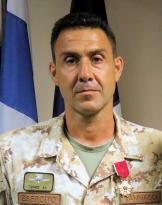To date, remote piloted aircraft, more commonly referred to as "drones", have reached a level of employment that ranges from the military to the more amateur one. Between these two extremes is inserted a range of activities in continuous expansion but still often hindered by a still unclear legislation.
In order to better understand the state of the art of these media and future prospects we met prof. Marco Strano, manager of the UGL National Police, psychologist and criminologist, president of the Study Center for Legality, Safety and Justice (Italy) and scientific director of the International Forensics Consulting Team (Suisse), as well as vice-president of the EDPA European Drone Pilots Association which with almost 900 associated represents the most representative category organization.
Prof. Strano, let's do some clarity. What exactly are CDs? drones?
The mini-drones are originally born as toys as they are objects of modeling derivation. This is the biggest innovation. The components are actually of modeling origin, therefore suitable as toys. Now, some professional categories, including photographers, cameramen, and policemen, have discovered the use of these "toys" for work purposes. The situation, therefore, is a bit particular as it is about objects built on the basis of the prerogatives of a toy but which are used to work. There are certain types of drones that in stores are sold as toys but which, at the same time, are the same ones that are used to carry out professional activities such as for example aerial shots used by national newsletters.
At the police and armed forces level, what kind of activities can these vehicles do?
They can perform top-down and low-cost viewing activities. What was once the prerogative of aerial photography, then military aerial photography, can now be done with a toy of this kind.
The view from the top allows you to acquire information that is not perceptible from the ground level. Normally the Police Forces to look over an obstacle use probes, connected to a monitor, which are constrained by the height of the operator who uses them.
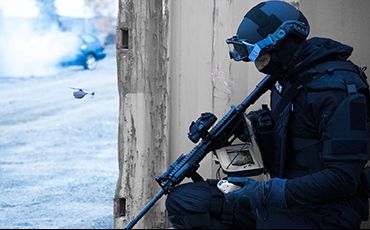
The drone makes it possible to overcome this limitation by reaching a higher height and thus having a greater awareness of the situation. At an even greater height, in place of helicopters which have the problem of noise, they are used to carry out tracking, monitor drug exchange activities, control a square from above etc. All this within the limits of a range that is only a few minutes.
The UGL Polizia di Stato, (Police Syndicate), has activated within it a research group to start the progressive replacement of the use of the helicopter in favor of the use of the drone. This for a number of reasons. First of all because if the mini-drone falls there are no pilots on board and it does not cause serious damage to the underlying people. All places with a high density of people are certainly more protected with a drone that flies over the area rather than with a helicopter because in the event of an accident the drone certainly produces less damage to people or things. The second reason is the costs. An average helicopter costs from 500 to 1000 euros per flight time. The costs of using the drone are certainly lower.
At the crime scene and repertamento level, at what point is the use of these means in our country?
In some countries, such as Romania, the Scientific Police has provided in every half a drone that is used to detect and register crime scenes from traffic accidents, as from above it is possible to take pictures that allow us to understand better the dynamics of the accident. So it is clear that some countries are ahead of us.
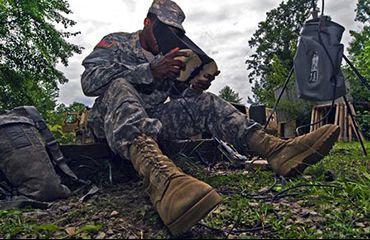 As for the search for traces they are not used officially, but the policemen who perform activities on the crime scene use it because from above it is possible to view objects that would otherwise not be easy to identify. In all the cases of news emerged in recent years drones have never been officially used. This makes us reflect as a single person within a few hours, with a drone, manages to beat a square kilometer area. The same operation, carried out with traditional systems, would require the employment of many more human resources employed over a period of days and days. In fact, to date, the "human chain" method is still used for research activities. By using a drone, on the other hand, it would be possible to carry out a much more effective research activity since, by dividing a zone into quadrants, a single person could beat an area of square kilometers with natural benefits to the survey.
As for the search for traces they are not used officially, but the policemen who perform activities on the crime scene use it because from above it is possible to view objects that would otherwise not be easy to identify. In all the cases of news emerged in recent years drones have never been officially used. This makes us reflect as a single person within a few hours, with a drone, manages to beat a square kilometer area. The same operation, carried out with traditional systems, would require the employment of many more human resources employed over a period of days and days. In fact, to date, the "human chain" method is still used for research activities. By using a drone, on the other hand, it would be possible to carry out a much more effective research activity since, by dividing a zone into quadrants, a single person could beat an area of square kilometers with natural benefits to the survey.
With regard to the legislation governing the use of such aircraft, Italy is the point at which?
The legislation is apparently defined. However, as it is inapplicable, we are in a phase of uncertainty. ENAC (National Civil Aviation Authority) has issued a regulation that is difficult to apply. This is because the discriminant that is the background to the entire regulation is linked to employment. Therefore, if the aircraft is used to play, all in all, it is subject to fewer restrictions, while if it is used in a professional way, it is bound to a whole series of requirements that are difficult to acquire. It is clear that in this way people declare that they carry out a playful activity while, instead, they use this tool to work. It is therefore an impossible regulation to apply. If you want to make it applicable, you should also prevent people from playing with these means. Since there is an overlap between these aircraft and a model aircraft they should effectively prevent model aircraft, which has been going on around the world for a long time.
Probably the biggest mistake was to consider drone also an object that weighs just over a kilo. Comparing such an object with an airplane automatically makes the regulation inapplicable.
Is there more clarity on the international level or are we all more or less at the same level?
The same situation can also be found at an international level. Initially there was, worldwide, the attempt of the control bodies of the flight to assimilate these toys to airplanes but today the same institutions are returning on their steps as it has emerged there too the impossibility to correctly apply the legislation in the field.
Prospects for the future?
The prospects for the future are that these objects will spread incredibly even among non-professionals. What happened with personal computers in the years '70 -' 80 will happen when computers were tools for specialists at the time. Then, with the marketing of PCs, we have arrived to have at least one in every home. So, the idea for the future is that these drones will follow the same evolution of personal computers and will have a home use.
They will be means used to carry out daily routine activities by everyone. What happened with cryptography will also occur. In the 80 years cryptography was forbidden when it was even considered a strategic weapon. Someone was reported and arrested for having a cryptographic program inside a PC. Anyone with a smartphone or tablet today has encryption software included. For the drones, the same thing will happen. Within 5 or 6 years will become a common object to be used in domestic activities especially in their mini configuration.
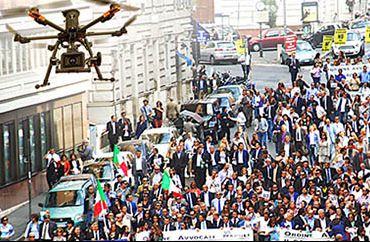 Regarding the Police Forces, however, personally, inside the body, I'm trying to spread the belief that an object of this kind should be part of the personal endowment. A policeman who carries out any external institutional activity should have such an object in the same way as a cell phone. This is because the top view allows you to gain a greater advantage in any type of police activity. Consider that in England the police use drones to perform a top-down monitoring during public order services or sporting events for several years. The drone should therefore become the policeman's eye also from us.
Regarding the Police Forces, however, personally, inside the body, I'm trying to spread the belief that an object of this kind should be part of the personal endowment. A policeman who carries out any external institutional activity should have such an object in the same way as a cell phone. This is because the top view allows you to gain a greater advantage in any type of police activity. Consider that in England the police use drones to perform a top-down monitoring during public order services or sporting events for several years. The drone should therefore become the policeman's eye also from us.
The remotely piloted aircraft therefore constitute a fixed point for the future of flight in its various forms. The advantages that these means allow to acquire compared to traditional means are incontestable.
The Italian Armed Forces already use these means in particularly complex military operations to carry out intelligence and support activities.
The hope is that even the Police will adapt as soon as possible to these operational developments in order to provide a more efficient service with the advantage of reducing the economic costs.
Andrea Strippoli Lanternini
(photo: Proxdynamics / US Army / FlyTop)




